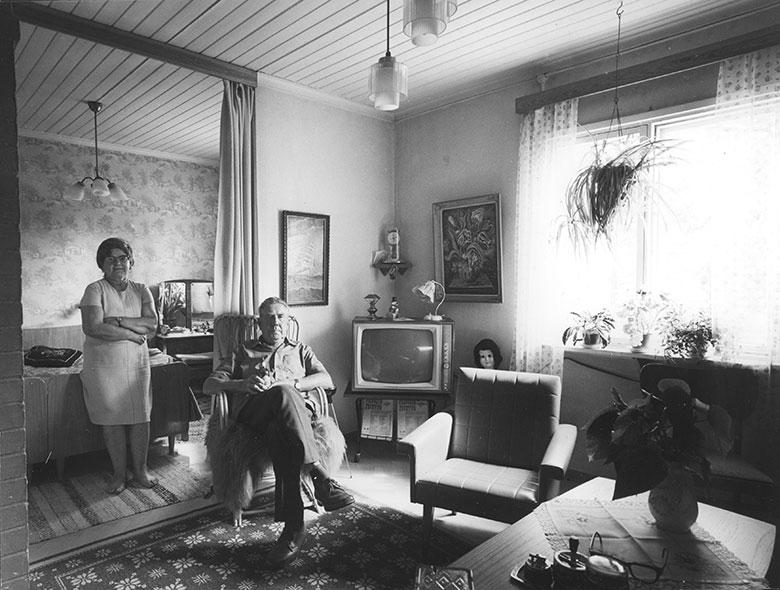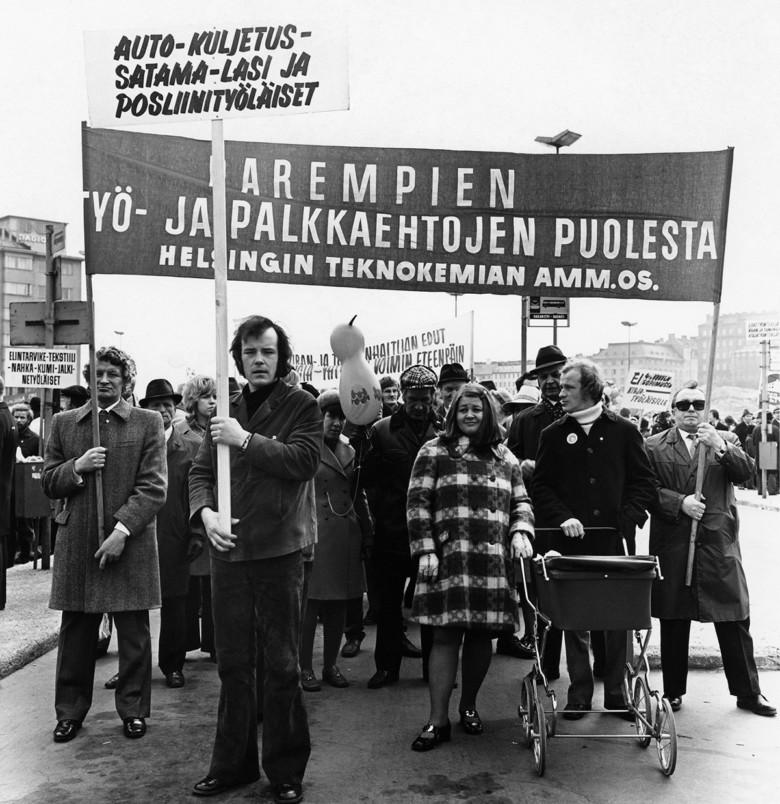Civil society as a builder of modern Finland (1940–1980)
After the wars, civil society became part of the welfare state.
After the Second World War, Finns began to rebuild the nation in a great nationalist spirit. The enthusiasm to take action affected civic organizations, too. They offered a change from normal work and helped people to forget for a while the traumatic experiences of the lost wars.
As there were only few competing activities taking up people’s free time, an exceptional amount of energy was put into work in associations. In this period associations were lively, and the activities held a great significance for people.
Post-war period was characterized by a leftist ethos
Following the directives of the peace agreement, almost 3,000 associations, classified as rightist, were closed. At the same time, in the years 1944–1948, 2,500 socialist and communist organizations were formed, as well as numerous co-operative organizations between the communist and other political forces.
These organizations included, for example, the Finland-Soviet Union Society and the Finnish Peace Committee. These associations had a role in promoting the vigour of civic activities to an exceptional degree.
Vocational organizations proliferated
Linked to this period was also the breakthrough of the vocational organizational activities. Employees and officials were increasingly active in joining both the Central Organisation of Finnish Trade Unions (SAK) and other central organizations from 1944 onwards. The Finnish Confederation of Technical Salaried Employees (STTK) was founded in 1946. A fourth central organization, the Confederation of Unions for Academic Professionals (AKAVA), was created in 1950.
Large-scale cooperations left the domain of civil society forever.
In the years following the war, various new educational and study organizations were founded. The cooperation movement continued to grow. Cooperative enterprises developed more and more clearly into businesses corresponding to limited companies. During these years large-scale cooperations left the domain of civil society forever.
Television and cars competed over people’s spare time
Technological developments and the improved living standards brought about the modernization of Finland from the end of the 1950s onwards. Finnish society went through a great transitional period in the 1960s. It is claimed to have been the fastest transitional period the history of the world had seen that far.
While people’s mobility increased due to motorization, their free time was more and more often spent at home watching television instead of the communal houses of associations. This had an impact on the activities of the associations.
With people trying to settle in concrete housing estates and wondering about the opportunities the new technologies offered them to widen their sphere of life, there was no longer as much energy available to be spent in the organizational activities.

The political decades electrified social activities
Although many traditional organizations experienced a hiccough in their activities in the altered situation, there was never an actual recession in the domain of civil society. Trade unions and political activities enjoyed a new burst of life from the end of the 1960s onwards.
The Western wave of leftist radicalism reached Finland in the second half of the 1960s and encouraged people to be active in trade unions and political parties. The same period saw the big post-war generations move to the university cities.
Characteristic of the Finnish context was that radical youth chose the associational model as the channel of their activities. The radicalism grew into association activism. The same has happened later as well. The benefit of this model has been that dangerous fundamentalist movements or terrorist organizations have not been able to take root in Finland.

Radical youth chose the associational model as the channel of their activities.
In Finland the 1970s turned into a period of strong social, organizational work. Political parties, local trade unions and new leftist and rightist youth associations and student societies were all active.
The political competition led to the foundation of hundreds of new associations. During politically and ideologically tough times, it was typical of the Finnish political culture to try and beat the competition with bureaucratic means of organization, by setting up new associations so as to demonstrate the potency of the movement.
The civil society of the welfare state is born
At this stage Finland moved permanently from the epoch of popular movements to that of civic organizations. The rapid increase of state subsidies, the rise in the number of paid staff, the idealizing of systematic planning, and the overall thriving of organizational activities gave birth to an organizational bureaucratic phase in the history of civic activities.
This phase has continued up until the twenty-first century. Organizations took the place of movements, hierarchies and verticality took over the horizontality, and systematic planning replaced spontaneous creativity.
Finland moved from the epoch of popular movements to that of civic organizations.
The formation of modern society since the 1960s brought about a new kind of connection between the public administration and the actors in the field of organizational activities. The dialogue between the welfare state and the actors of civil society was based on this premise.
The increase in the number of operational sectors of society also led to the widening of the organizational domain. The phase of the welfare civil society in Finland began in the 1970s and 1980s, when on the one hand various lobbying organizations emerged and, on the other, different life-style and identity-related associations were founded.
Article is based on the text “Civil society as a builder of modern Finland” by Aaro Harju, published earlier on this web site.